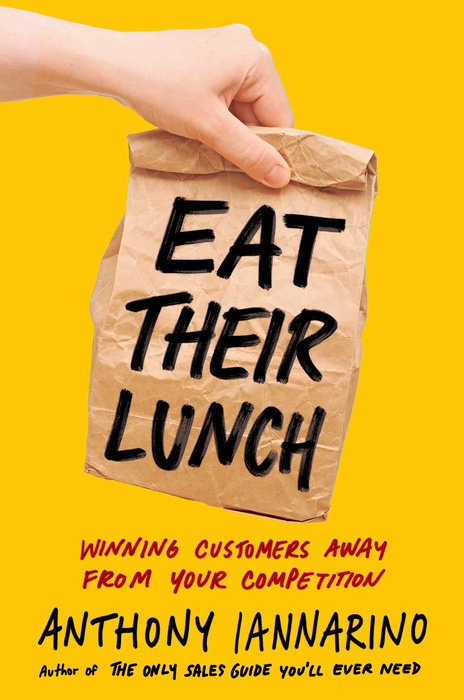The Gist:
- Your client is going to buy based off of preference, formed from value creation, relationships, and solutions.
- The sales conversation is the vital competitive advantage to winning deals against competitors by providing the insights to define the problem, resolve problems, and provide great advice.
- A great relationship and a solution that produces the most outcomes for the client is a sure way to win more deals.
It’s incredibly easy to believe that your rivals have a competitive advantage over you, especially in terms of size and scale. They may have a visible advantage when it comes to their products and solutions, with more (and more valuable) options than what you have available. What’s worse is when they also have a hot hand, winning high-visibility, high-value deals.
In these settings, sales leaders have to help their teams with healthy, empowering beliefs about what they sell, and more importantly about how they sell. The worst thing imaginable is a group of leaders who also believe that their competitor is simply better because of their advantages.
The Twenty-Eighty Rule
The Pareto principle (the eighty-twenty rule) suggests that 20% of any group of people will account for 80% of their wealth. This principle seems to extend to other outcomes, like the fact that 20% of your activities account for 80% of your results. It’s also why the top 20% of a sales force tends to have more revenue, even if they don’t quite reach 80%.
When you start to worry about your competition, keep in mind that a good number of the salespeople against whom you are competing have a one in five chance of being in the top 20% at their company. You also have a one in five chance of competing against a rep who happens to be in the bottom twenty-percent, maybe because they are struggling or are new to sales. Even if your competitor’s results make a perfect bell curve, half of their reps are in the bottom half.
Now, go back to all those advantages you think your competitor has. Even the bottom 50% of their sales force works for the same company, sells the same product, has the same pricing, and may even work for the very same manager as those at the top of stacked ranking. Perhaps, all the advantages of size, scale, and solutions aren’t enough to ensure every salesperson wins deals and succeeds at the highest level.

Where Does Preference Live?
Let’s start with an idea that is difficult for many salespeople to accept: your client is going to buy from the person and the company they choose. The way to describe this idea is “preference,” the desire to buy from one person over another person. The idea of preference doesn’t mean that all the advantages your competitor has are worth nothing, but it does mean that they can’t guarantee a single win. Just ask the “Cinderella” teams during March Madness!
If you work for a big company, you have had the experience of losing to a smaller firm, one that has none of your advantages. If you work in a small company, you have had the experience of losing to a larger company, one with the ability to provide a scale you lack. Preference seems to be located outside of some of the factors that salespeople believe (often dubiously) to drive decisions. In fact, the struggling salespeople in all those companies with all those tremendous advantages can tell you exactly why they are not able to win at the same level as the top salespeople—be it their territory, their leads, their manager, the constant Jell-O residue on their stapler, or some sort of black magic or voodoo. They rarely talk about how well they create a preference for clients to buy from them.
To find where preference resides, we first have to look at the idea of value creation, the ability to create value within the confines of the sales conversation. From there, we need to look at the relationship, and finally the solution.


Value Creation
You might ask yourself this question about a deal you won: “Who did the most to help the client define their problem, explore their options, resolve their concerns, and provide what the client believes to be the best advice about the decision they are making?” While you may not have the cutting-edge Dinglehopper 3000 your competitor has, chances are you provided greater insights, you seemed to care more, and you were the most helpful.
As a leader, you need to ensure your team believes that their most vital competitive advantage starts and ends inside the sales conversation. The only reason a sales force isn’t able to win through their sales approach is because they haven’t learned that’s their true advantage or they haven’t put in the hard work to develop it.
Relationship
Over the past decade, there has been much talk about how relationships are not central to winning deals and that it isn’t important for a salesperson to be likable. These rumors are not true and never will be. There has always been a level of known, liked, and trusted in sales, but getting there now requires value creation (in part, economic value). Preference has a lot to do with your relationship with your clients.
Given the choice between buying from 1) a person you find to be repulsive, 2) one who is okay, and 3) one you really want to work with, you will choose #3 every time. Those who believe otherwise are people who think they make 100% objective decisions. I recently read a quote from Taleb that said, “If you know the reasons someone is your friend, they’re not your friend.” We can even push that further: “If you know why you love someone, you don’t love them.” You can use your client relationships to create an advantage where others can’t, especially when they believe their advantage is their product.

The Solution
We cannot pretend that the solutions don’t have any value; that would be criminal negligence. What you might notice, though, is that sometimes salespeople try to sell the solution when they should really be selling the outcome. You can lose with a great solution and win with the right outcome. A better solution isn’t one that has more features and benefits but the one that creates the most valuable outcomes for the client.
There is nothing you can do about your competitor or their Dinglehopper 3000. Nor can you do anything about how they sell, even if they sell on price as a way to dominate your market. The only things in your control are 1) what you believe to be your advantage and 2) the actions you take to provide the best sales conversation, the best relationship, and the best overall solution, no matter what your product is.
Do Good Work
- What are ways you think your competitors have an advantage on you?
- Based off the information above, what are some key strategies you can employ in order to win more deals from your competition.
- The things you can control are what you believe your advantage is and the actions you take to provide the best conversation, relationship, and solution. Make a list of the actions you can take right now to provide the best for your client.

Essential Reading!
Get my 3rd book: Eat Their Lunch
"The first ever playbook for B2B salespeople on how to win clients and customers who are already being serviced by your competition."
Buy Now







.jpg?width=768&height=994&name=salescall-planner-ebook-v3-1-cover%20(1).jpg)


